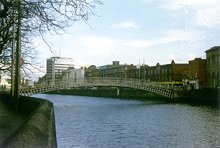Hotel Room Directory - Best ai Hotel Prices Loading
 Loading...
Loading...
 Loading...
Loading...
Your ultimate guide to finding the best deals and top-rated hotels in the vibrant heart of Dublin, Ireland. Compare prices, amenities, and read real reviews to book your ideal hotel today!
When visiting Dublin, Ireland, finding the perfect hotel room accommodation is crucial to having a comfortable and enjoyable stay. Dublin is a vibrant city with a rich history, beautiful architecture, and lively culture. Whether you are traveling for business or pleasure, there are plenty of options for hotel rooms in Dublin to suit your needs and budget.
Dublin, Ireland Hotels
One popular option for accommodation in Dublin is staying in a hotel in the city center. This puts you within walking distance of many of Dublin s top attractions, such as Trinity College, Dublin Castle, and Temple Bar. The city center is also home to a variety of restaurants, bars, and shops, making it a convenient location for both sightseeing and enjoying the local nightlife.
Dublin, Ireland Hotels
If you prefer a quieter and more relaxing stay, you may want to consider staying in a hotel outside of the city center. There are plenty of charming boutique hotels and bed and breakfasts located in the suburbs of Dublin, offering a peaceful retreat from the hustle and bustle of the city. Some of these accommodations may also provide stunning views of the Dublin countryside or coastline.
Dublin, Ireland is one of the most popular holiday destinations for travellers from around the world. The city is full of culture, history, art, and architecture, and is home to some of the best pubs and nightlife in the world. That s why hotelroomdirectory.com is proud to offer the widest selection of hotels in Dublin, Ireland.
|
| Dublin, Ireland. |
 Hotelroomdirectory.com is the perfect site for booking a stay in Dublin. Whether you re looking for a low-budget option, or a luxurious 5-star hotel, we have you covered. We offer hotels in all price ranges and at various locations throughout the city, from stylish city centre hotels to family-friendly accommodation near the airport. With a great selection of hotels, you re sure to find something that suits your budget and needs.
|
Finally, hotelroomdirectory.com also offers great discounts and offers which can help you save on your holiday. Book tickets through us and you can get up to 25% off on select attractions and activities. We also have special offers for last minute bookers and family-friendly packages. With so many ways to save money, it s no wonder hotelroomdirectory.com is the perfect place to book your stay in Dublin.
If you re looking for the perfect holiday destination in Ireland, look no further than Dublin. With hotelroomdirectory.com s great selection of hotels, attractions and activities, you re sure to find the perfect place to stay, and enjoy everything this beautiful city has to offer.
Important consideration to look for when booking a hotel include location, complimentary breakfast, internet connection, cancellation policy, compare price and hotel reviews.
No booking fee
Consideration to watch for when booking vacation appartments include WiFi, full kitchen, air conditioning, washing machine, wine glasses, pets accepted and parking and customer reviews.
Secure Booking
Check for, including exact location of Resort, internet connection, meal plan - allinclusive, number and type of beds, air conditioning, special discounts and rewards and repeat visitors.
Instant Confirmation
Things to include when booking B & B such as breakfast menue, exact location, room type, air condioning, bath room facilities, toiletries, power adapter and floor level of unit.
Refund Policy